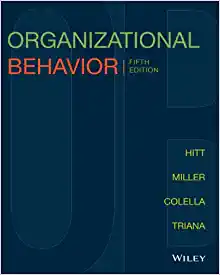Learners will have read brief stories of people like Kelley at the LAPD. The story deals with
Question:
Learners will have read brief stories of people like Kelley at the LAPD. The story deals with two pivotal events in Kelley’s early days as a fire fighter. It was included and told to make a point about diversity that reinforces the claim that high-involvement management includes managing diversity and is not possible without it. This gripping account of Kelley’s loss of her dream to be just another competent fire fighter told a story in just a few words, so that the reader could picture Kelley being harassed and left in harms way by people trained and pledged to save lives. Does she react in ways that do harm to these people and ultimately their organization? Her next actions can create a more positive or more negative future for all concerned. It is a moment like countless moments ahead in your learners’ careers that will put their ethicality to a test. How they behave writes the next chapter of their own stories.
Questions:
1. The objective of this exercise is for learners to conjure in their imaginations just such a pivotal moment from the history of their own direct experience in organizations. Like Kelley, the learner’s life is a story, replete with moments in which one took a stand against discriminatory behavior, for example, and said and did what was right.
2. Ask the learner to compose a similarly brief story of an actual event in their day (or a recent day) that corresponds to their emerging understanding and appreciation of organizational diversity.
3. This can be told privately, just to oneself; semi-privately, in writing to the instructor; or, as an act of courage, told publicly, talking in pairs, small teams, or in writing, posted on the course e-learning platform. The more public the telling, the more the rule to protect the confidentiality of the setting and involved persons should be reinforced.
4. People naturally tell such stories to friends, family, and even strangers. This exercise simply capitalizes on what learners often do to elicit feedback. Thus, debriefing this exercise should be familiar. In this instance, the learner asks questions of those being told within the framework of diversity:
a. Who was in the right here? Was it me? The other person(s)? Both? Neither?
b. What difference might it have made if I had acted on the opposite choice?
c. What am I revealing here about myself? My values and morals?
d. What impact, if any, did my work surroundings have on my chosen way of acting in this situation? Can I honestly say I was forced to think and act as I did?
e. Had I been able to turn the clock back to the beginning of my story and live it over, would I have behaved differently?
5. Finally, ask learners to summarize and state highlights (verbally or in writing) of what they learned about the meaning of diversity from the story they are living out day by day. Probe for recognition that strategic organizational behavior is rooted in the ethical and unethical practices of each associate and manager.
Step by Step Answer:






